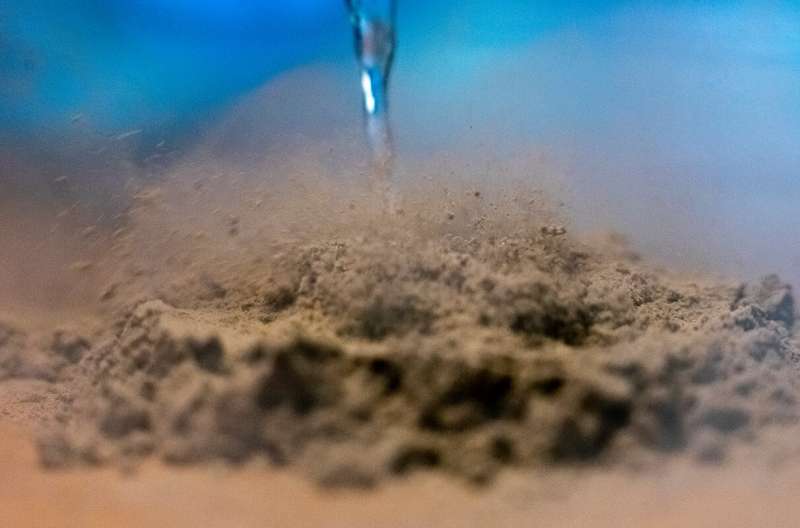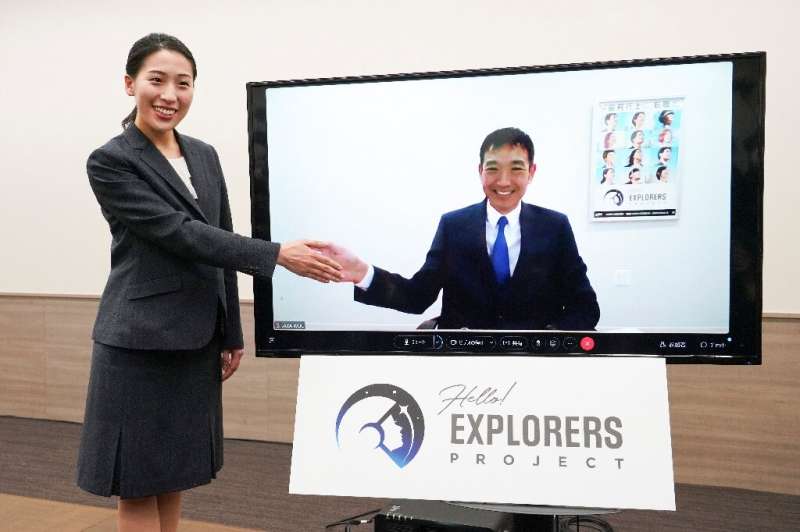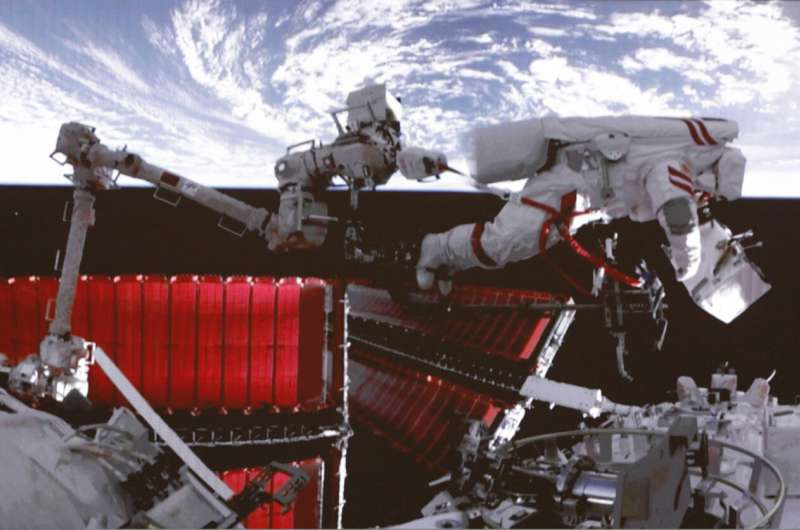NASA's autonomous aircraft decision tech gets simulated urban test
Wednesday, 01 March 2023 10:17 Cities are complicated places to fly. Tall buildings, local microclimates, high winds, and other factors present challenges - both known and unpredictable - for current and future air vehicles. But creating new air mobility solutions to move people and cargo will require addressing those challenges. And that's where NASA's Data and Reasoning Fabric (DRF) project can help.
DRF designs techn
Cities are complicated places to fly. Tall buildings, local microclimates, high winds, and other factors present challenges - both known and unpredictable - for current and future air vehicles. But creating new air mobility solutions to move people and cargo will require addressing those challenges. And that's where NASA's Data and Reasoning Fabric (DRF) project can help.
DRF designs techn Meet Carole Mundell, new Director of Science
Wednesday, 01 March 2023 08:00 Video:
00:05:10
Video:
00:05:10
Carole Mundell is the new Director of Science, succeeding the current director Günther Hasinger.
Professor Mundell is an internationally renowned scientist with extensive experience in inclusive leadership, operational management, strategy and international science policy development.
She joined ESA from the University of Bath where she held the Hiroko Sherwin Chair in Extragalactic Astronomy, was founding Head of Astrophysics, and served as Head of the Department of Physics until becoming the first woman Chief Scientific Adviser at the UK’s Foreign and Commonwealth Office in 2018 and first Chief International Science Envoy in the Foreign, Commonwealth and Development Office until 2021.
Apple lends Globalstar $252 million for satellite-enabled iPhones
Tuesday, 28 February 2023 22:46
Globalstar said Feb. 28 that Apple is lending the company $252 million to help cover upfront costs for replenishing its low Earth orbit constellation.
Industry group to examine potential security threats in cislunar space
Tuesday, 28 February 2023 17:42
The Space Information Sharing and Analysis Center, or Space ISAC, is forming a group to focus on the security threats the United States could face in cislunar space outside Earth orbit.
Blue Origin continues investigation into New Shepard anomaly
Tuesday, 28 February 2023 17:24
Nearly six months after an in-flight anomaly on a New Shepard suborbital mission, Blue Origin says it is still investigating the mishap and has no firm schedule for resuming launches.
Lux Semiconductors raises $2.3 million for microelectronics packaging technology
Tuesday, 28 February 2023 16:15
SAN FRANCISCO – Lux Semiconductors, a microelectronics startup with U.S. Air Force and Space Force awards, raised $2.3 million in seed funding.
Liquid nitrogen spray could clean up stubborn moon dust
Tuesday, 28 February 2023 15:24
A liquid nitrogen spray developed by Washington State University researchers can remove almost all of the simulated moon dust from a space suit, potentially solving what is a significant challenge for future moon-landing astronauts.
The sprayer removed more than 98% of moon dust simulant in a vacuum environment with minimal damage to spacesuits, performing better than any techniques that have been investigated previously. The researchers report on their work in the journal, Acta Astronautica.
While people have managed to put men on the moon, they haven't figured out how to keep them clean there. Similar to the clingiest packaging peanuts, moon dust sticks to everything that it touches. Worse than the packing peanuts, the dust is composed of very fine particles that are the consistency of ground fiberglass.
"Moon dust is electrostatically charged, abrasive and gets everywhere, making it a very difficult substance to deal with," said Ian Wells, first author on the paper and a senior in WSU's School of Mechanical and Materials Engineering.
China to expand its space station, international astronaut selection underway
Tuesday, 28 February 2023 13:59
China is planning to expand its Tiangong space station with a multi-functional module to enhance its capabilities.
Japan selects first new astronauts in 14 years to support Artemis program
Tuesday, 28 February 2023 13:24
Japan’s space agency JAXA said Feb.
SpaceX launches first upgraded Starlink satellites
Tuesday, 28 February 2023 12:46
SpaceX launched the first set of upgraded Starlink satellites for its second-generation constellation Feb.
Surgeon, scientist named Japan's first new astronauts in 13 years
Tuesday, 28 February 2023 11:17
Japan's space agency JAXA named its first new astronaut candidates in over 13 years on Tuesday, with a surgeon and a climate scientist chosen from more than 4,000 applicants.
Ayu Yoneda, a 28-year-old surgeon for Tokyo's Japanese Red Cross Medical Center, will become just the third woman ever to join the space training programme. Japan's six current astronauts are all men.
She will be joined by Makoto Suwa, 46, a senior disaster risk management specialist at the World Bank, who made the cut after an unsuccessful first application more than a decade ago.
Yoneda said she was "elated and surprised" to learn she had been chosen.
"I felt a sense of responsibility and mission," she told reporters.
Suwa, speaking by video from the United States, said he was "so excited that I haven't been able to sleep".
The pair, chosen from 4,127 applicants, will now begin a two-year training programme and, if successful, could join International Space Station missions and become the first Japanese astronauts to reach the Moon.
China says will train foreign astronauts for space station
Tuesday, 28 February 2023 11:16
China says it will soon begin training foreign astronauts for trips to its newly completed orbiting space station.
Long a source of national pride and symbol of technological advancement, the Chinese space program is taking on a new diplomatic and political role, much in the way the United States and former Soviet Union leveraged theirs.
First ispace mission on track for April lunar landing
Tuesday, 28 February 2023 11:07
Japanese lunar lander developer ispace said Feb. 27 that its first mission remains on track to attempt a landing in two months as it makes progress on its next two missions.
Yusaku Maezawa, Entrepreneur and First Private Japanese Citizen to Visit the ISS, Invests U.S. $23 Million in Astroscale
Tuesday, 28 February 2023 06:33 Astroscale Holdings Inc. ("Astroscale"), the market leader in satellite servicing and long-term sustainability across all orbits, has received an investment of U.S. $23 million from Yusaku Maezawa, the first private Japanese citizen to visit the International Space Station (ISS).
"Mr. Maezawa's investment is a testament to the importance of space sustainability, and we are deeply grateful
Astroscale Holdings Inc. ("Astroscale"), the market leader in satellite servicing and long-term sustainability across all orbits, has received an investment of U.S. $23 million from Yusaku Maezawa, the first private Japanese citizen to visit the International Space Station (ISS).
"Mr. Maezawa's investment is a testament to the importance of space sustainability, and we are deeply grateful Space Force, Air Force partner to establish new Space Test Course
Tuesday, 28 February 2023 06:33 The U.S. Air and Space Forces have partnered to create the new Space Test Course, which will instruct Guardians on test and evaluation processes, in order to conduct robust and methodical system testing on space-flight equipment at the Test Pilot School at Edwards Air Force Base, California.
Space Force Vice Chief of Space Operations Gen. David D. Thompson and Air Force Vice Chief of Staff
The U.S. Air and Space Forces have partnered to create the new Space Test Course, which will instruct Guardians on test and evaluation processes, in order to conduct robust and methodical system testing on space-flight equipment at the Test Pilot School at Edwards Air Force Base, California.
Space Force Vice Chief of Space Operations Gen. David D. Thompson and Air Force Vice Chief of Staff 
